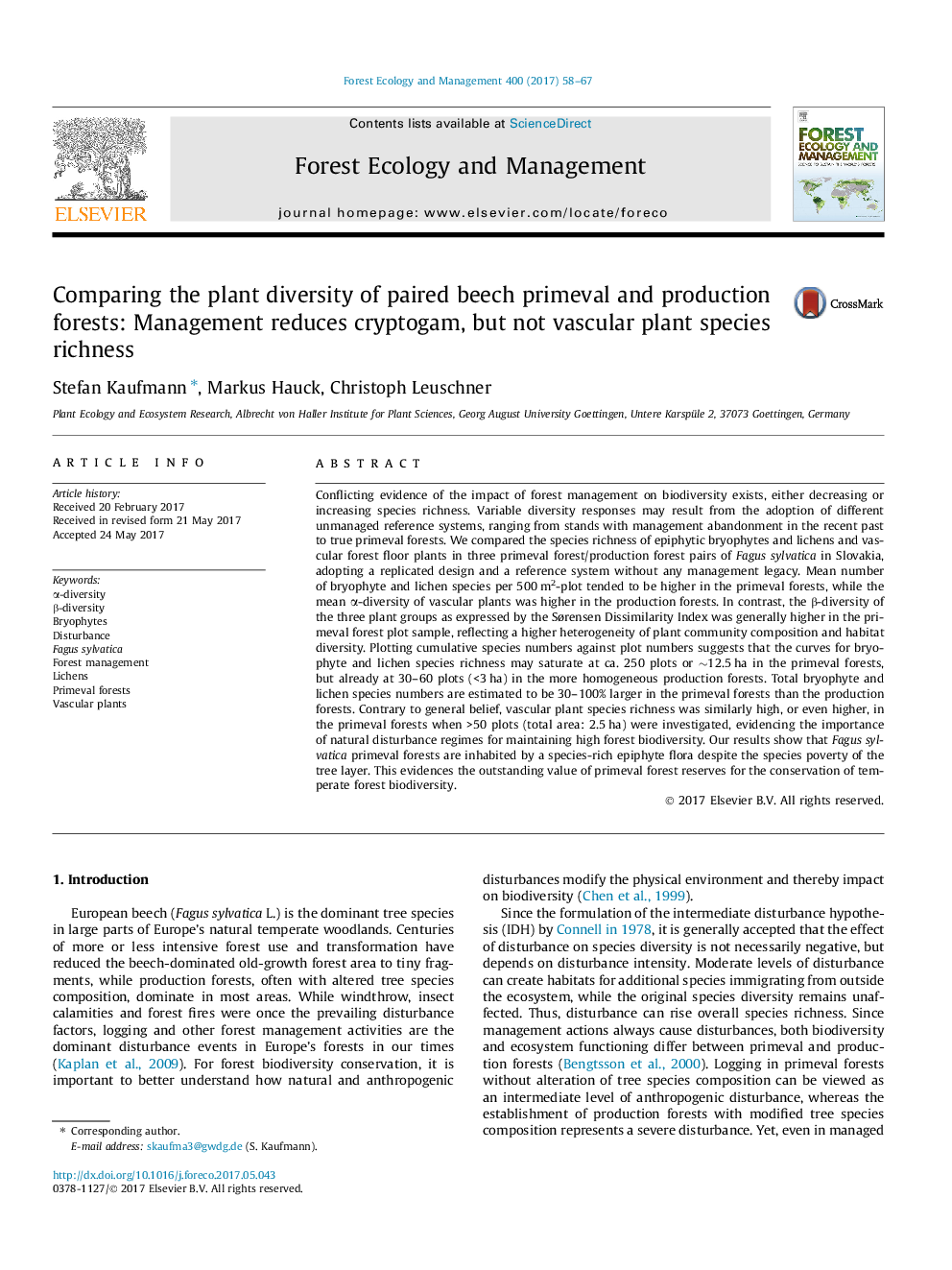| کد مقاله | کد نشریه | سال انتشار | مقاله انگلیسی | نسخه تمام متن |
|---|---|---|---|---|
| 6459204 | 1421358 | 2017 | 10 صفحه PDF | دانلود رایگان |
- Bryophyte and lichens species richness was 30-100% larger in the primeval forests.
- Vascular plant diversity was even higher in primeval forests.
- β-diversity of the three plant groups was higher in the primeval forests.
- Importance of primeval forests for conservation of forest biodiversity.
Conflicting evidence of the impact of forest management on biodiversity exists, either decreasing or increasing species richness. Variable diversity responses may result from the adoption of different unmanaged reference systems, ranging from stands with management abandonment in the recent past to true primeval forests. We compared the species richness of epiphytic bryophytes and lichens and vascular forest floor plants in three primeval forest/production forest pairs of Fagus sylvatica in Slovakia, adopting a replicated design and a reference system without any management legacy. Mean number of bryophyte and lichen species per 500 m2-plot tended to be higher in the primeval forests, while the mean α-diversity of vascular plants was higher in the production forests. In contrast, the β-diversity of the three plant groups as expressed by the Sørensen Dissimilarity Index was generally higher in the primeval forest plot sample, reflecting a higher heterogeneity of plant community composition and habitat diversity. Plotting cumulative species numbers against plot numbers suggests that the curves for bryophyte and lichen species richness may saturate at ca. 250 plots or â¼12.5 ha in the primeval forests, but already at 30-60 plots (<3 ha) in the more homogeneous production forests. Total bryophyte and lichen species numbers are estimated to be 30-100% larger in the primeval forests than the production forests. Contrary to general belief, vascular plant species richness was similarly high, or even higher, in the primeval forests when >50 plots (total area: 2.5 ha) were investigated, evidencing the importance of natural disturbance regimes for maintaining high forest biodiversity. Our results show that Fagus sylvatica primeval forests are inhabited by a species-rich epiphyte flora despite the species poverty of the tree layer. This evidences the outstanding value of primeval forest reserves for the conservation of temperate forest biodiversity.
Journal: Forest Ecology and Management - Volume 400, 15 September 2017, Pages 58-67
